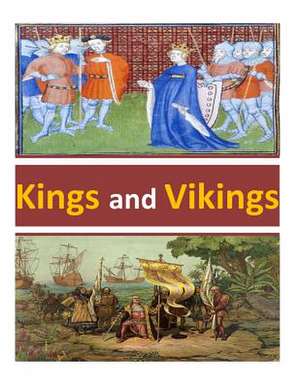Kings and Vikings
Autor United States Naval Academyen Limba Engleză Paperback
Preț: 92.96 lei
Nou
Puncte Express: 139
Preț estimativ în valută:
17.79€ • 18.62$ • 14.72£
17.79€ • 18.62$ • 14.72£
Carte disponibilă
Livrare economică 17-31 martie
Preluare comenzi: 021 569.72.76
Specificații
ISBN-13: 9781499190823
ISBN-10: 1499190824
Pagini: 30
Dimensiuni: 216 x 279 x 2 mm
Greutate: 0.1 kg
Editura: CREATESPACE
ISBN-10: 1499190824
Pagini: 30
Dimensiuni: 216 x 279 x 2 mm
Greutate: 0.1 kg
Editura: CREATESPACE
